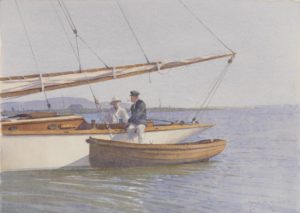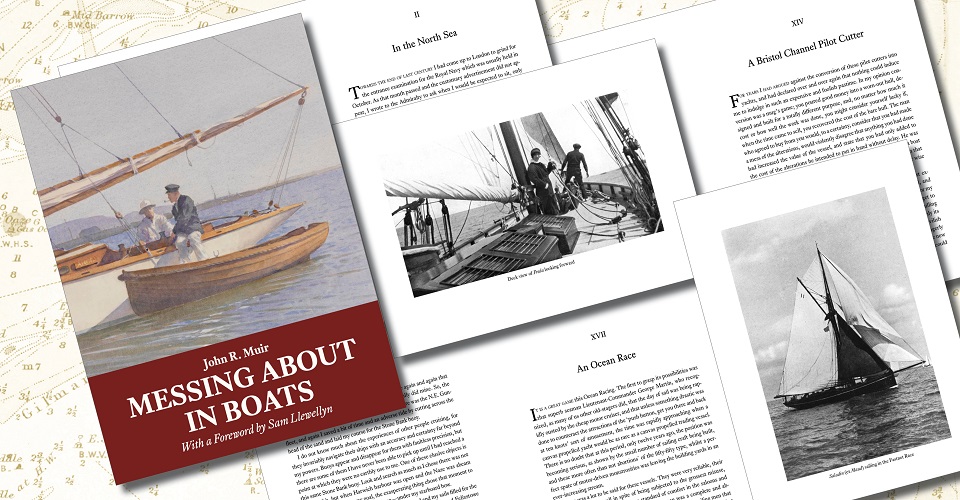A correspondent familiar with the first edition of Messing About in Boats wrote to me: a delightful book of real sailing from a man who comes over as being kind, compassionate and considerate. He bought three copies of our new edition as gifts—an example worthy of emulation.
It’s clear that the author John Muir was a man of the utmost humanity and probity, tragically lost, in a requisitioned motor yacht, to a German mine off Portsmouth in 1940. But the following passage from his experience crewing on a working Bristol Channel pilot cutter might be thought at the extreme limit of the credible:
I reminded him of his bragging one day when we were returning after putting the pilot on board a ship. Bill’s answer was to jump up from the helm, open the doorway in the bulwarks and push the dinghy into the ditch after bending a stout painter to a shackle in her forefoot. The painter was marked at a spot near the dinghy, and at this mark was made fast to the boom at a place where there was a scratch in the wood. He then fixed a triangular sausage-shaped fender along the doorway outside the ship and resting against the topstrake of the cutter’s side. We were running at the time with the boom pinned in and the peak halliard eased off a little, the usual trim of the mainsail when off the wind, so the peak was set up and the topping lift slacked away.
The mainsheet was then run out until the dinghy was towing alongside with its nose nearly level with the after end of the doorway opening. Bill then took the helm and steadied her for a moment, and then suddenly jibed her over by putting the helm hard up. The boom and the alteration, of course, dragged the nose of the dinghy round so that she was pointing straight for our beam, and when the boom went over with a crash it lifted the bow of the dinghy in the air and it fairly leapt into the cutter without touching anything except the fender. As soon as Bill saw that the boat was on its way he jumped from the tiller, and seizing the stern of the boat wrenched it violently round so that it came to rest alongside the bulwarks at the opposite side of the ship. He lashed it in position and came aft. ‘What do you think of that?’
Like the book itself, our cover picture is a haven of retreat from the hectic distractions of today. The marine artist Martyn Mackrill held a very successful show at our favourite chandlery, Arthur Beale, in London some time ago, where I first came across his work, and of the lovely images he offered as suitable for this book, his watercolour ‘Come Aboard’ resonated most strongly with me, as I hope with you.
The biographical details of the author to be found on the cover came via courtesy of his alma mater George Watson’s College in Edinburgh, which maintains an archive of the war service of its former pupils. They now have our new edition of his Messing About in Boats in their library.


